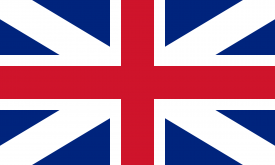GBP – British Pound
British Pound Overview
The UK’s Bank of England. British Pound includes such as Quid, Nicker, Cable, Sterling.
Importance of the British Pound
The British Pound is the oldest currency still in use today, as well as one of the most commonly converted currencies. The Falkland Islands, Gibraltar, and Saint Helena are all pegged at par to the GBP.
British Pound Notes and the Gold Standard
The first paper notes were introduced in 1694. The Bank of England, one of the first central banks in the world, was established a year later, in 1695. All Sterling notes were handwritten until 1855 when the bank began to print whole notes. In the early 20th century, more countries began to tie their currencies to gold. The strength of the Sterling that came with the gold standard led to a period of major economic growth in Britain until 1914.
The British Pound and the Sterling Area
The British Pound was not only used in Great Britain but also circulated through the colonies of the British Empire. However, as the British economy started to decline the US Dollar grew in dominance. In 1940, the Pound was pegged to the US Dollar at a rate of 1 Pound to $4.03 US Dollars and many other countries followed, by pegging their respective currencies. In 1949, the Pound was devalued by 30% and a second devaluation followed in 1967.
Currency Facts
Name: British Pound
Symbol: £ Penny: p
Minor Unit :
1/100 = penny
Central Bank Rate: 0.50
Top GBP Conversion :
GBP/EUR
Top GBP Chart :
GBP/EUR Chart
Inflation : 0.50%
Nicknames: Pound Sterling, Sterling, Quid, Nicker
Coins: Freq Used: £1, £2, 1p, 2p, 5p, 10p, 20p, 50p
Rarely Used: £100
Banknotes :
Freq Used: £5, £10, £20, £50
Rarely Used: £100
Central Bank :
Bank of England
Website: http://www.bankofengland.co.uk
Users: United Kingdom (UK), England, Northern Ireland, more




